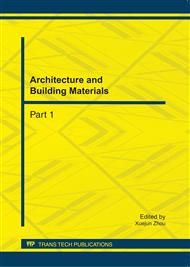p.965
p.972
p.977
p.982
p.988
p.994
p.1000
p.1005
p.1014
Preparation and Humidity Controlling Behaviors of Diatomite/Polyacrylic Acid Composite
Abstract:
Diatomite/polyacrylic acid composite was synthesized by using inverse suspending polymerization method under different diatomite content, dispersant content and neutralization degree with orthogonal experiments. The surface morphology, structure and humidity controlling properties of composite were observed and determined. The results show that diatomite/polyacrylic acid composite is in a block like structure with different size. During the polymerization process, acrylate monomer is grafted with hydroxyl on the surface of diatomite and then inserted successfully into the void of diatomite. The impact of three factors on the humidity controlling behavior of composites increases by the order of dispersant content, neutralization degree and diatomite content. The optimum preparation parameters are diatomite content of 40%, dispersant content of 15%, neutralization degree of 90%.
Info:
Periodical:
Pages:
988-993
Citation:
Online since:
September 2011
Authors:
Keywords:
Price:
Сopyright:
© 2011 Trans Tech Publications Ltd. All Rights Reserved
Share:
Citation:


